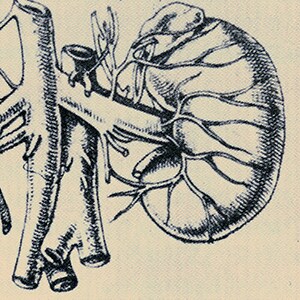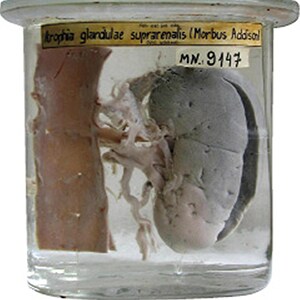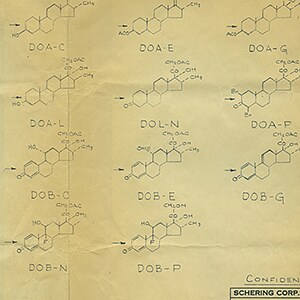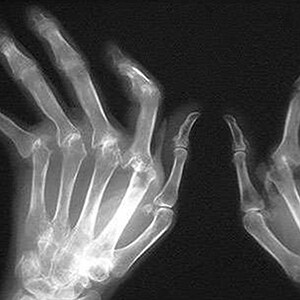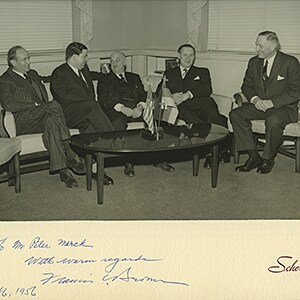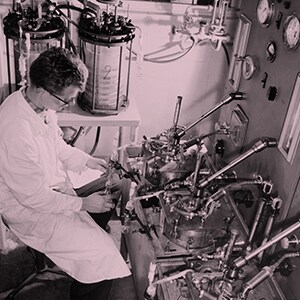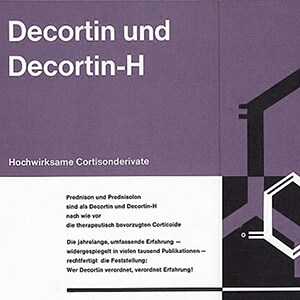
textblock default title
»Cortisone production of our own may be possible in future on the basis of intermediates delivered to us by Schering [Corporation, USA].The meeting was conducted in a spirit of friendliness, in fact with marked cordiality on Schering’s part.«
Minutes of a Board of Directors meeting, 1954
Cortisone changes fundamental notions of medical theory. Cortisone is key to the vision of humans as organisms that obey physico-chemical laws and hormonal control systems.
In 1855, Thomas Addison publishes his famous monograph, »On the Constitutional and Local Effects of Disease of the Suprarenal Capsules«. It does little to help people suffering from adreno-cortical insufficiency. Treatment is impossible. Only in 1910 does it become known that the adrenal glands produce an agent essential to life, a »hormone« – but what kind of substance is it? This question keeps biochemists busy for decades. A laboratory at the Mayo Clinic in the United States succeeds in extracting it – a single gram from the organs of 20,000 cattle. Could this substance, which after all is essential to life, be a cure? When the U.S. firm Merck & Co. succeeds in partly synthesizing sufficient amounts of »cortisone«, a woman with severe arthritis is treated in 1948 with spectacular success – a medical milestone that is positively celebrated, not only with the Nobel Prize in Medicine. The socioeconomic impact is huge: cortisone makes sick people fit enough to go back to work! A replacement drug for people with endocrine crisis becomes a ubiquitous pharmaceutical. But this pharmaceutical has side effects.
When Schering Corp. in the United States develops prednisone and prednisolone – modified versions with a favorable mechanism of action – Darmstadt sees a huge opportunity: might it be possible to acquire licenses? Schering and E. Merck, Darmstadt, Germany – two companies with a similar history. Personal relations are still intact. Sure enough, contracts are signed that enable E. Merck, Darmstadt, Germany, to manufacture corticoids from 1955 onward.
The agreements come with a cost. The Americans use biotechnology for a complicated step in synthesis, deploying bacteria and fungi for targeted modification of molecules. Surely we can do it in Darmstadt ourselves, the thinking goes – since we already use microorganisms to make vitamin C? But this case calls for highly complex fermentation processes. It is completely uncharted territory and an excellent training ground for cooperation between chemists, microbiologists and engineers. Prednylidene emerges from the company’s own pipeline in 1962. However, the »cortisone pendulum« swings powerfully in both directions. Cortisone demands a lot from pharmacologists. It saves lives. It makes people ill. Often, one is not possible without the other. Public debate over fundamental concepts of healthcare ensues. Amid the confusion, E. Merck, Darmstadt, Germany, finds a responsible way to handle these substances of epochal importance.
Eustachius, an anatomist, describes the adrenal glands in 1563. Their function is long recognized only in folk medicine: butchers used their juice to stop wounds from bleeding. Adrenaline’s role in this is a 20th century discovery, as is our knowledge of adreno-cortical hormones.
Addison’s disease can be life-threatening, for example by precipitating acute hypertensive crisis. Cortisone comes to the rescue – but only for rich people. One celebrity patient is John F. Kennedy, later to become President of the United States. When synthesis succeeds in 1951, the price per gram falls from US$ 8500 to US$ 35 – cortisone becomes a medicine for all.
Accessing the American hormone pool is a key company goal in 1955. Mutual respect transcends borders and drives efforts to find a solution: »We want to help you […] any way we can!« writes Schering Corp. in the United States. E. Merck, Darmstadt, Germany, goes on to acquire »near exclusivity« in Germany.

